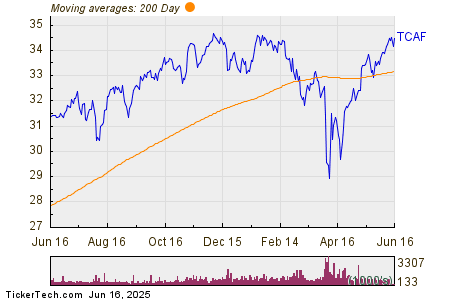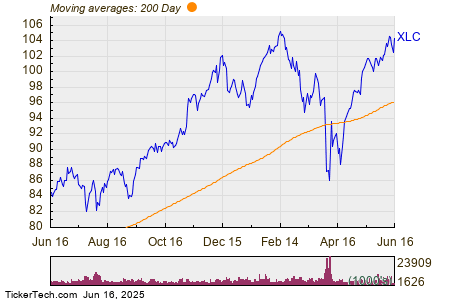Nvidia Stock Takes Hit Amid Tariffs and Chinese Loopholes
Nvidia Stock (NASDAQ:NVDA) experienced a nearly 9% decline during Monday’s trading, coinciding with the Nasdaq index falling just over 2%. This market downturn aligns with U.S. President Donald Trump’s announcement of a 25% tariff on imports from Canada and Mexico effective Tuesday. Nvidia’s drop was further influenced by investigations into Chinese buyers allegedly circumventing U.S. export controls on advanced semiconductor chips. The implications of these events for Nvidia Stock merit closer examination.
Image by Jacek Abramowicz from Pixabay
Limited Impact of Tariffs on Nvidia
The initial round of tariffs is not expected to significantly affect Nvidia. The company primarily has its chips manufactured by TSMC in Taiwan, although some systems utilizing these chips are made in locales such as Mexico, which could experience minor disruptions. However, Nvidia’s core business, its high-margin GPU segment, is likely to remain largely insulated. Notably, President Trump has suggested the possibility of a “25% or higher” tariff on all semiconductor chip imports, a situation investors should monitor closely. Despite this potential, we believe it will not drastically diminish Nvidia’s revenue. The company recorded an adjusted gross margin of approximately 75.5% in 2024, indicating that the cost of imports is likely less than a quarter of total revenues. Additionally, U.S. sales constitute about 47% of Nvidia’s revenue, further limiting the impact. Furthermore, TSMC plans to invest $100 billion into new chip manufacturing facilities in the United States, where Nvidia expressed interest in producing chips. This move could help mitigate tariff risks long-term. For those seeking reduced volatility, the High-Quality Portfolio has outperformed the S&P 500, with returns exceeding 91% since inception.
Concerns Over China’s AI Loophole
Export control restrictions have been placed on most of Nvidia’s advanced AI chipsets in China, with the exception of the H20 chips, due to national security issues. Reports indicate resellers in the gray market are exploiting entities outside of China to purchase servers featuring Nvidia’s latest technologies from various countries, including Singapore, Malaysia, Taiwan, and Vietnam. This development raises concerns, particularly because Singapore has emerged as Nvidia’s second-largest market, contributing about $23 billion in sales in FY’25—an 18% revenue share compared to just $2.3 billion (8% revenue) in FY’23. Singapore has launched an investigation into these possible loopholes.
The emergence of DeepSeek, a Chinese open-source AI model, demonstrates China’s growing capabilities in AI, with hefty investments from significant players like Alibaba and Baidu. Should Chinese firms successfully evade sanctions, stricter enforcement could adversely impact Nvidia’s revenues.
Volatility in Nvidia’s Stock Performance
Nvidia’s stock has undergone notable volatility over the past four years. Annual returns include 125% in 2021, -50% in 2022, 239% in 2023, and 171% in 2024. In contrast, the Trefis High Quality (HQ) Portfolio, which encompasses 30 stocks, exhibited significantly less volatility and outperformed the S&P 500 during the same period. The HQ Portfolio achieved better returns with reduced risk, avoiding the dramatic fluctuations evident in Nvidia’s performance metrics. Given the current unpredictable macroeconomic conditions surrounding rate cuts and ongoing geopolitical tensions, Nvidia may face challenges similar to those in 2022, potentially leading to underperformance relative to the S&P 500 over the next 12 months—unless it experiences a notable surge.
Currently, we assess Nvidia Stock at approximately $101 per share, which is about 20% below its present market valuation. For further insights, refer to our valuation analysis on Nvidia: Is It Expensive or Cheap? Several factors contribute to our cautious stance on the Stock. We foresee a possible decline in the “fear-of-missing-out” AI surge that characterized the past two years. This potential easing could stem from diminishing performance gains from larger models and the increasing scarcity of high-quality training data. Such a shift towards more efficient models may deepen challenges for GPU manufacturers like Nvidia. Moreover, the company faces intensified competition from firms like AMD, alongside its own clients such as Amazon, which are developing proprietary AI chips. While Nvidia maintains a robust software ecosystem surrounding its AI processors that could help retain customers, the company may still encounter pressures on its current premium valuation, which may not fully account for these risks.
| Returns | Mar 2025 MTD [1] | 2025 YTD [1] | 2017-25 Total [2] |
| NVDA Return | -9% | -15% | 4238% |
| S&P 500 Return | -2% | -1% | 161% |
| Trefis Reinforced Value Portfolio | -2% | -4% | 658% |
[1] Returns as of 3/4/2025
[2] Cumulative total returns since the end of 2016
Invest in Trefis Market-Beating Portfolios
see all Trefis Price Estimates
The views and opinions expressed herein are those of the author and do not necessarily reflect those of Nasdaq, Inc.









